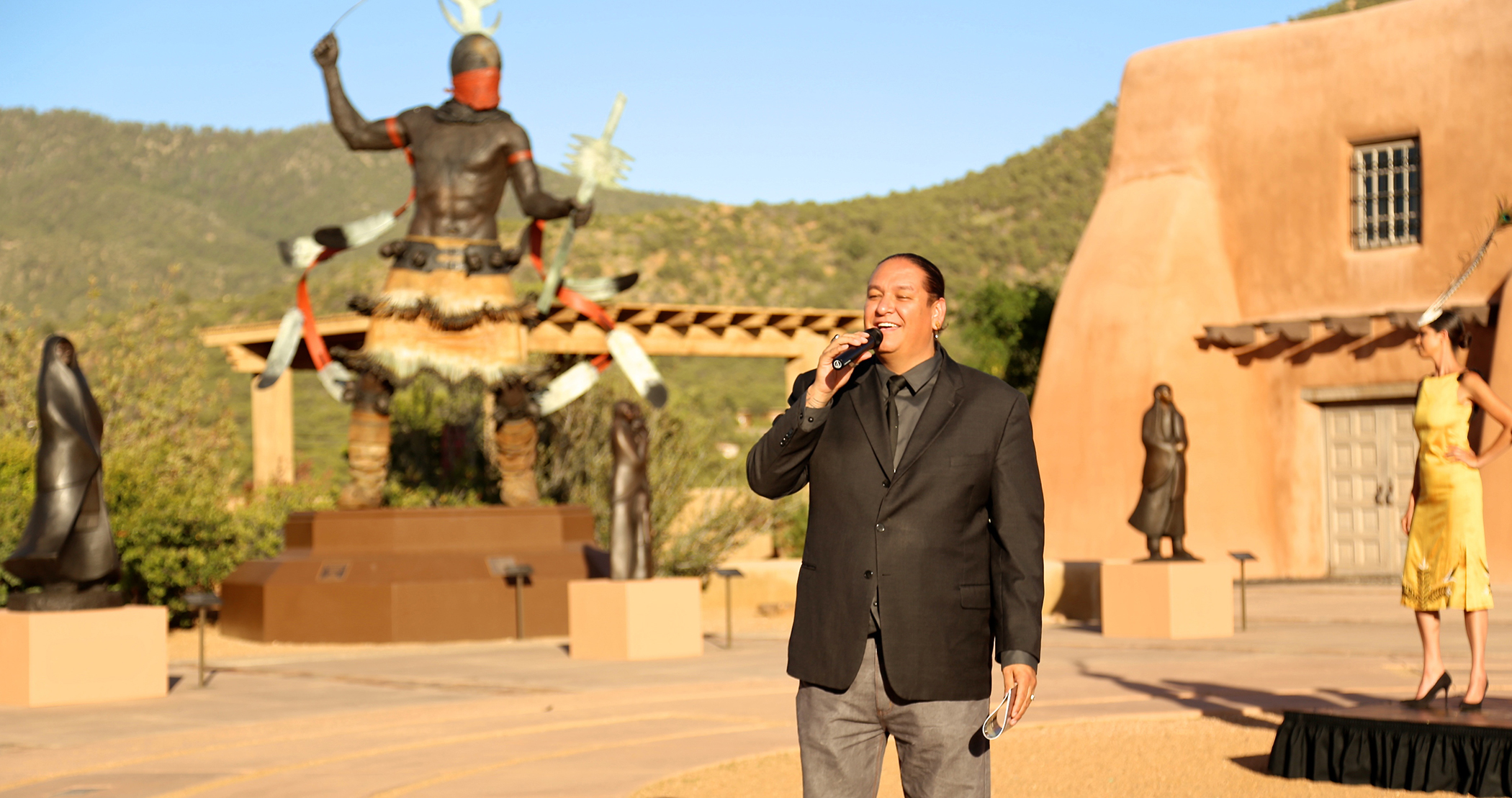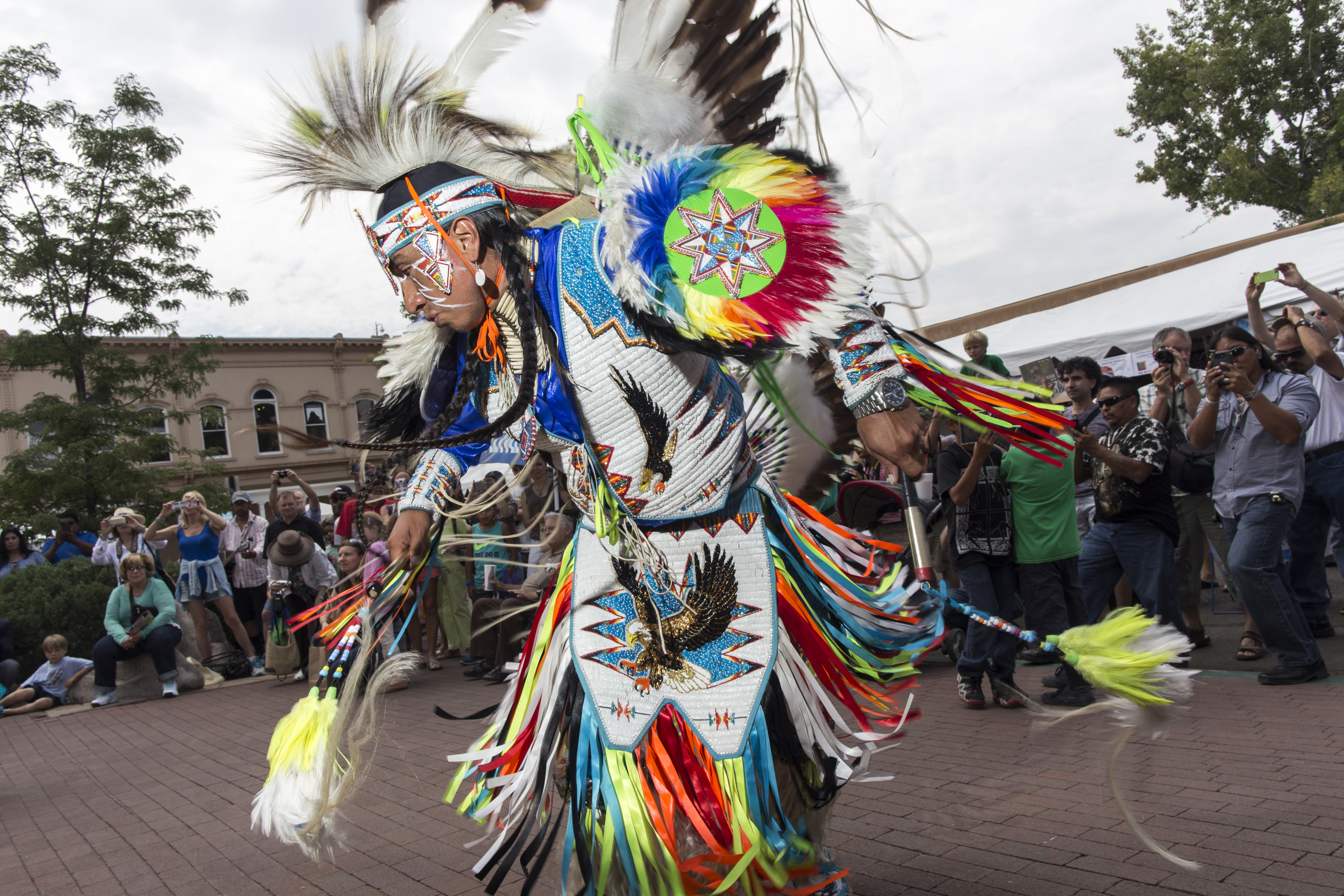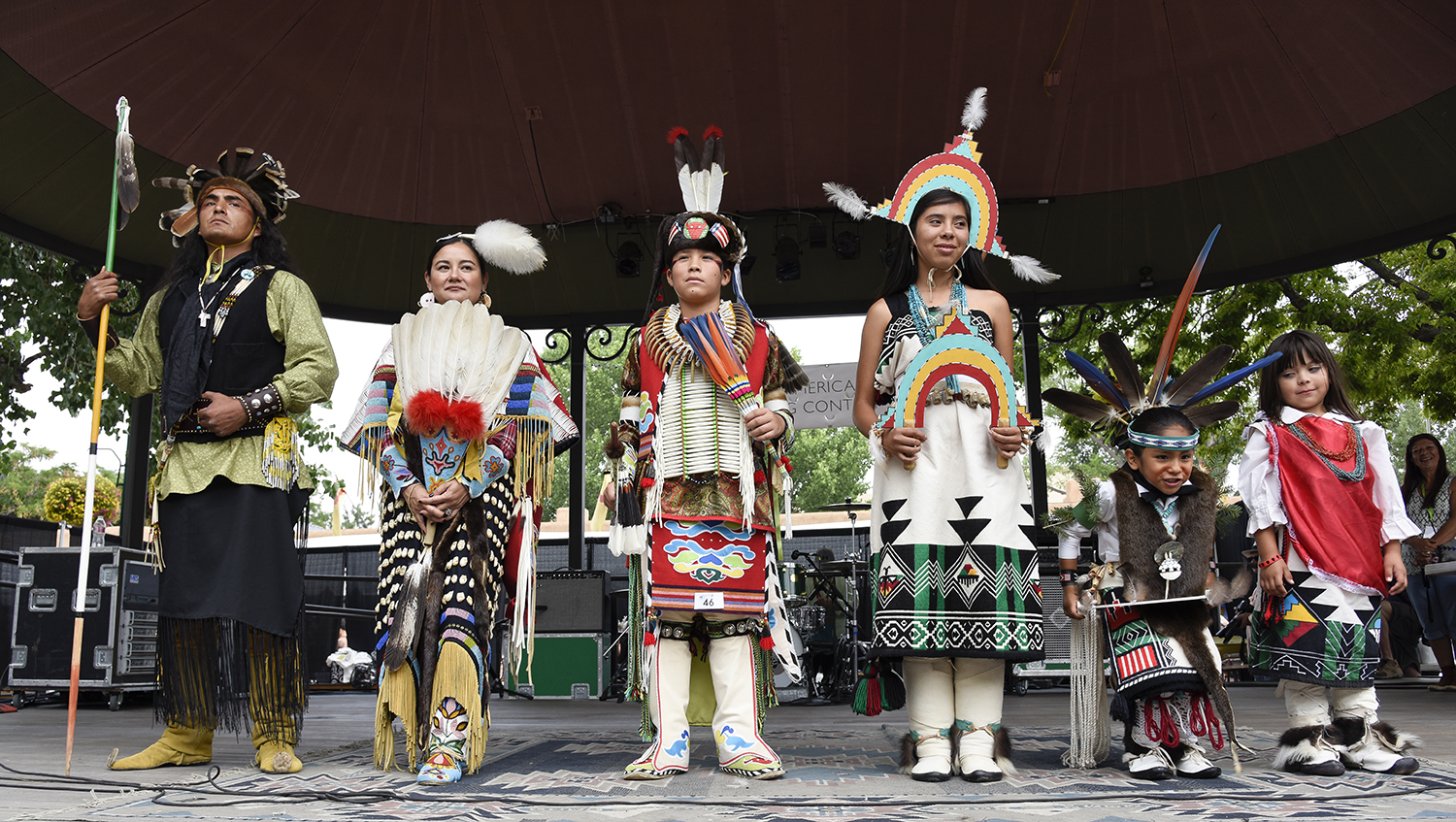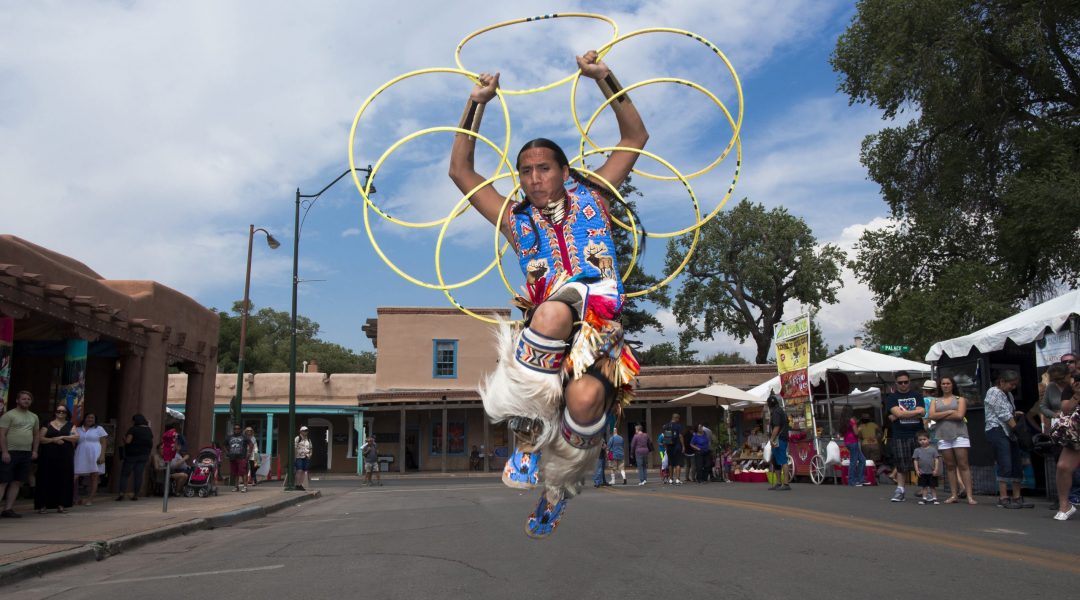
C&I talks with Dallin Maybee, chief operating officer of Southwestern Association for Indian Arts’ huge annual August event.
Dallin Maybee (Northern Arapaho/Seneca) is so busy during the run-up to Santa Fe Indian Market that it’s hard to believe he can make time for a conversation when he’s juggling all the operational details for SWAIA’s biggest show of the year. The crazy-big event transforms the Santa Fe Plaza into an internationally renowned mecca for shoppers/collectors/consumers of Southwestern art and culture every August — this year, August 20-21, with plenty going on in the days before — and Maybee’s the guy in charge of “the logistical components” of producing it.
Besides being an award-winning fine artist, Maybee shoulders the responsibility for making sure all the myriad details come together and Indian Market goes off without a hitch. It helps that he understands what’s involved from several different perspectives: He’s been an artist at Indian Market since 2001, ended up on the board after finishing law school, was appointed as an interim director, and finally found permanency in his current position as COO.
“I continue to produce art and participate at a few shows throughout the year, which really aids me in empathizing with artists and issues that may arise at our event,” he says.
We talked with Maybee just before 2016 Santa Fe Indian Market and picked his brain for artists to watch, his recommendations for the best market experience, and other inside scoop.
Cowboys & Indians: Indian Market’s been around since its first incarnation in 1922. What is its purpose?
Dallin Maybee: Our mission is to bring Native arts to the world by inspiring artistic excellence, fostering education, and creating meaningful partnerships. As an organization whose constituency consists of artists, collectors, supporters, volunteers, and sponsors, we work together to create an experience to promote our artists’ work and strengthen our community which appreciates our culture and art forms.
C&I: How has the event itself evolved?
Maybee: Our event started as a fair and has now evolved into a high-level fine art show featuring Native art forms, traditional and contemporary. These narratives often include very personal and tribal specific stories. Others do not. It is this diversity that is one of the more powerful aspects of our event.
C&I: What keeps people coming back?
Maybee: I believe that our artists and their art forms are what keep the Indian Market experience relevant. Visitors return year after year, often for decades, in order to participate in such a special experience. Finding new artists and new interpretations alongside traditional forms that go back generations is a wonderful opportunity!
C&I: What can we expect this year?
Maybee: We have 733 booths this year with more than 950 artists represented from amongst 230 tribes.

C&I: Tell us about this year’s merchandise art.
Maybee: This year’s merchandise fellow was selected by a fellowship committee from across all mediums and classifications. Benjamin Harjo Jr. is a longtime SWAIA artist whose work graces museums and collections worldwide. Whimsical and full of color, his often-abstract presentations are full of story and joy.
C&I: It’s not a fair question, but if you had to name a half-dozen or so artists to seek out, who should we look for and what kind of art do they do?
Maybee: I generally have a handful of artists whose booths I like to visit. My brother, Kenneth Williams Jr., is a beadwork artist whose contemporary work is wonderful. Some other [favorites] are Jamie Okuma, beadwork and fashion; Duwayne Chee Jr., carving and sculpture; Jesse Monongye, jewelry; Denise Wallace, jewelry; Lyndon Tsosie, jewelry; Ryan Lee Smith, painting; Mary Janice Ortiz, Cochiti Pueblo pottery forms; Erik Fender, San Ildefonso pottery.
C&I: Who is the most far-flung artist attending this year and where are they coming from?
Maybee: That’s a tough question! We have artists from Alaska, Canada, and far East Coast locations such as Massachusetts showing, but I’m not exactly sure of the mileage.
C&I: How are the artists helped by exhibiting at Indian Market?
Maybee: I think the obvious answer is financially, but there are intangible benefits as well. As the largest and most prestigious show, our awards program can introduce a phenomenal new artist whose work may not have been seen before, and also highlight established artists and recognize their mastery and skills.
C&I: What are some things people might not realize about Indian Market?
Maybee: That we have phenomenal contemporary artists at the Indian Market as well as traditional forms. People often erroneously believe that somehow Indian Market dictates and pigeonholes our artists into particular art forms. As an artist at market for 15 years, and now as a director for the last three years, I can confidently state that we accept artists whose work is exceptional, no matter what the art form. Even our fellows from the last three years have included filmmakers, writers, and digital/video installation artists, in addition to the traditional mediums. We have a contemporary art show called Indian Market: Edge, which highlights some great contemporary artists in all forms, as well as an haute couture fashion event with participating designers whose looks have graced the runways of Paris, New York, Los Angeles, and more. Those who claim we are only a traditional art market probably haven’t participated in a long while!

C&I: In your opinion, what’s the ideal way for a first-time visitor to experience all that Indian Market offers? (A great day at Indian Market would be ...)
Maybee: A great way to begin the market experience would be to first, plan appropriately. There are so many things happening in Santa Fe in the week leading up to Indian Market you must be aware. Find our guides and make a schedule. You can start with a preview of the Edge show on Thursday, August 18. Then attend one of the previews on Friday; it is one of the only places where we can present a few of the best pieces that artists have brought to market this year. You couldn’t visit all the booths in time on Saturday Morning. Many pieces will have sold at the very beginning of Market. The Gala is a wonderful event on Saturday night. And to round out your visit, make sure to visit the Museum of Indian Arts and Culture and the Wheelwright Museum before you leave Santa Fe.
C&I: For people who haven’t been before and aren’t collectors yet, how do you advise they take it all in and get started on a collection?
Maybee: Definitely spend some time getting acquainted with the many art forms. Preview night is a great way to see the upper echelons of each classification and medium, but as you move around market on Saturday, you will hopefully find art forms in a variety of price points. Definitely collect what you like. Discover what makes you happy enough to want to welcome the piece into your home where you can enjoy it for years to come.
C&I: And for people who collect culinary experiences?
Maybee: Santa Fe is renowned for its scenery and food. Some great restaurants in town include Eloisa, the Compound, and Tomasita’s, to name a few favorites.
C&I: Any pitfalls to avoid for people unfamiliar with Santa Fe or Indian Market?
Maybee: Elevation [7,198 feet] is always an issue. Rest when you can and hydrate. You don’t want to miss anything because you have to acclimate! It’s a very exciting time in Santa Fe — definitely prepare accordingly.
C&I: What do you see in the future for Indian Market?
Maybee: I would like to see Indian Market find permanency, a place where we can entertain year-round visitors with gallery space, museum interpretive experiences, meaningful youth programming and education, residency programs for visiting artists, etc. While we do a lot throughout the year, I believe an endowment would further our vision for a true place in Santa Fe.
Find out more about Santa Fe Indian Market.














